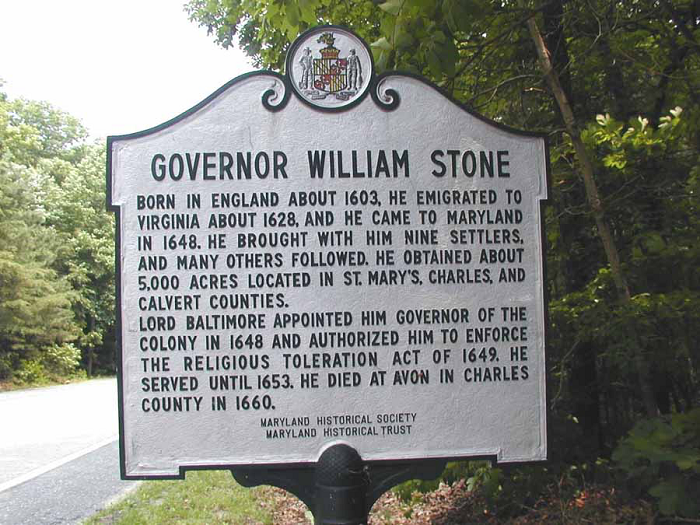Annapolis, Maryland is filled with charm, intrigue, secrets, and stories that span 400 years. But did you know that Anne Arundel county is filled with just as much history? There are forty-eight historic markers scattered throughout Anne Arundel county, and you’re bound to spot one or two if you keep an eye out. Just take a drive down Governor Stone Parkway or cross the Naval Academy Bridge - you'll see them!
 Oil painting, 1853, by Tompkins Harrison Matteson, The Founding of the Colony of Maryland. The painting is located in the Senate Lounge, Maryland State House.
Oil painting, 1853, by Tompkins Harrison Matteson, The Founding of the Colony of Maryland. The painting is located in the Senate Lounge, Maryland State House.
If you stand on the north shore of the Severn River, you’ll see the United States Naval Academy front and center. You'll even be able to make out the Maryland State House at the heart of downtown Annapolis. However, 370 years ago, you’d be standing in the newly founded town of Providence. Down at the docks, a man named William Stone, the newly appointed Governor of Maryland, and around 500 Puritans would be disembarking after a long journey from Virginia; their previous home that they had now been pushed out of. Fresh faced and anxious to start anew, these people were crucial in Governor Stone’s task given to him by Lord Baltimore: to resettle the Virginia Puritan colonists in a central region of the Province of Maryland.

Find this marker on Google Maps
Religion has always played a big part in the establishment of cities, governments, colonies, and even countries, but can you think of a single instance where everything went exactly as planned and everyone coexisted peacefully? Me either.
One year after the founding of Providence, religious tensions between the Protestants in Maryland and the newly settled Puritans had grown into a considerable concern. In true “diplomatic peacemaker” fashion, Governor Stone signed the Religious Toleration Act, or A Law of Maryland Concerning Religion. In essence, this law ensured freedom and tolerance to all believers of God. As long as you believed in Jesus Christ, your neck was safe. (If you are interested in reading the act for yourself, you can find a copy here).

Although it was paved with good intentions, the Religious Toleration Act passed by Governor Stone did little to stop the deepening rift between Protestants and Catholics. If you were still standing on the north bank of the Severn in March 1655, you’d see a fleet of ships headed straight for you. And if you somehow managed to stay out of the way of hundreds of angry Catholics on their way to battle (lead by Governor William Stone, mind you), you’d witness the Battle of the Severn. Even though this battle is largely forgotten in Colonial American history, it did a lot to shape the religious and governmental climate in Maryland.
In 2018, there is little left of the settlement of Providence, the Battle of the Severn, or the footsteps of Governor William Stone. Thanks to the Maryland Historical Trust, we can visit the significant places around Anne Arundel County, and appreciate where this amazing place started from.
Stay tuned for more historic markers!
All photos are property of the Maryland Historical Trust.








